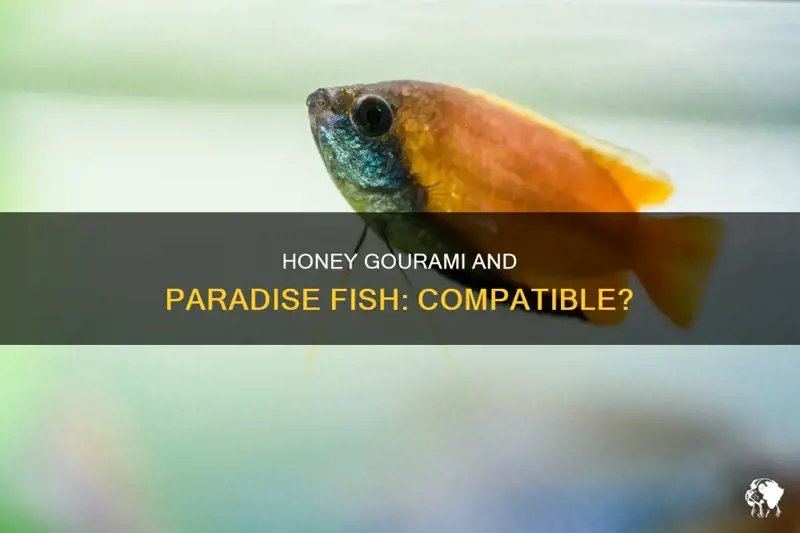
Gouramis are fascinating creatures, known for their peaceful nature and lovely colors. However, just because they seem friendly doesn’t mean they’ll get along with all fish. Imagine inviting a friend to a party where they don’t know anyone. Some fish can be more territorial or aggressive, which could lead to trouble. Let’s dive into what makes gourami compatible with other fish, how to assess tank mates, and create a harmonious underwater community.
Understanding Gourami Behavior
Gouramis belong to the Osphronemidae family, which includes various types like the betta, pearl, and dwarf gourami. These fish are generally considered peaceful and community-friendly. However, they do have distinct personalities. Gouramis are known for their shy nature, often preferring to hide in aquatic plants or decorations.
Here’s the thing: while they thrive in community settings, their behavior can change depending on their surroundings. For example, a gourami might be more assertive if it feels threatened or out of its comfort zone. Think of it this way—just like people, fish can react differently in new or stressful situations.
Also, many gouramis have a labyrinth organ, allowing them to gulp air from the surface. This unique ability means they can live in oxygen-depleted waters, but it also makes them prone to stress if other fish are competing for the same space. Therefore, a well-planned environment is crucial for their happiness.
Key Factors for Compatibility
When selecting tank mates for your gourami, there are several factors to consider. Compatibility often depends on the personalities and behaviors of both the gourami and the potential companions. Here’s what to keep in mind:
- Size: Ensure the size of your tank mates is appropriate. Smaller fish may get bullied, while larger fish might see gouramis as a snack.
- Temperament: Matching the personalities of the fish is vital. Look for species known for being peaceful and non-aggressive.
- Water Conditions: All species should thrive in similar water conditions, including temperature, pH level, and hardness.
You might be wondering why size and temperament matter so much. A smaller fish can easily become stressed or injured by an overly aggressive tank mate. On the flip side, if your gourami feels threatened, it can lead to skirmishes and unhealthy stress levels.
Best Tank Mates for Gourami
Now that you know what to consider, let’s explore some of the best tank mates for gourami. Here are a few fish that typically complement gourami well:
- Neon Tetras: These small, colorful fish are peaceful and love to swim in schools. They tend to stay out of the way of gourami and bring a pop of color to your tank.
- Cherry Barbs: Known for their friendly nature, cherry barbs don’t usually bother gourami. They also add movement and color, creating a lively environment.
- Corydoras Catfish: Bottom-dwellers like corydoras are great companions. They’re peaceful, help keep the tank clean, and rarely interfere with the gourami.
- Rasboras: These fish are also shy and prefer to stick together in groups. They complement the gourami’s gentle demeanor nicely.
The beauty of having a diverse range of fish is that it can create a more dynamic and engaging aquarium. Imagine watching your gourami gracefully swim alongside a school of neon tetras—it’s a delightful sight!
Fish to Avoid with Gourami
While there are plenty of compatible fish, some species simply don’t mesh well with gourami. Here are a few to steer clear of:
- Bettas: These fish are notorious for being territorial, especially males. They often won’t tolerate the presence of other fish, including gourami.
- Angelfish: Although beautiful, angelfish can be aggressive and territorial, particularly as they mature.
- Goldfish: They require cooler water temperatures and can grow quite large, which may lead to stress for your gourami.
- Barbs: Some species, like the tiger barb, can be nippy and may harass your gourami.
It’s important to remember that not all fish fit neatly into these categories; paying attention to individual temperaments is essential. Even within a species, some fish can be more aggressive than others.
Setting Up a Harmonious Tank
Creating a peaceful environment for your gourami and its companions is crucial. Here are some tips to help with this:
1. Aquascaping: Incorporate plenty of plants, caves, and hiding spots. Gourami love to have places to explore and retreat to when they feel uneasy. Dense foliage can also help reduce aggression among fish.
2. Tank Size: A larger tank is generally better for community setups. 20 gallons is a good starting point for a few gourami and their friends. More space means less chance of territorial disputes.
3. Water Conditions: Keep an eye on water quality through regular testing and maintenance. Gourami thrive in slightly acidic to neutral pH with stable temperatures between 75°F and 82°F.
4. Monitor Interactions: After adding new fish, observe their interactions closely. You might need to separate fish if conflicts arise, so be prepared for that possibility.
The setup you create will serve as the foundation for your community. Think of it as a team-building retreat—everyone needs their own space, but the environment encourages interaction.
Common Mistakes to Avoid
Even seasoned fish keepers can make missteps. Here are some common pitfalls to watch out for:
– Overcrowding: It can be tempting to fill your tank with various species, but overcrowding can lead to stress and fighting. Stick to the general rule of one inch of fish per gallon of water to maintain balance.
– Ignoring Behavior: Never underestimate fish behavior. Just because two species are known to be compatible doesn’t mean they’ll get along. Watch for signs of aggression or stress.
– Inconsistent Water Conditions: Dramatic changes in water quality can stress fish, leading to illness or aggressive behavior. Maintain a steady routine for water changes and temperature checks.
Avoiding these common mistakes will help create a thriving environment for your gourami and their companions.
Choosing the right tank mates for your gourami is key to creating a serene underwater haven. By understanding their behavior, recognizing compatible species, and maintaining a well-planned environment, you’ll set the stage for a beautiful aquarium. It’s all about balance—just like in life!
Remember to take your time and don’t rush the process. You’ll find that the effort you put into carefully selecting your fish and their environment will be incredibly rewarding. Enjoy the journey, and happy fishkeeping!

